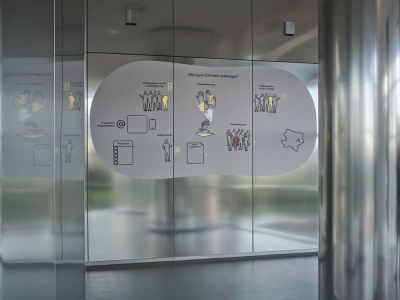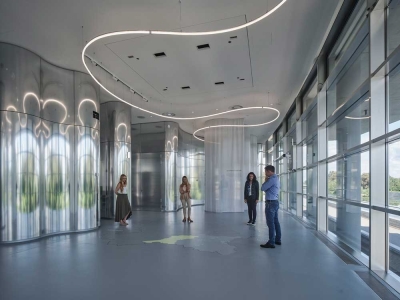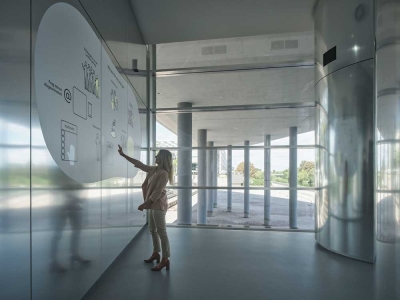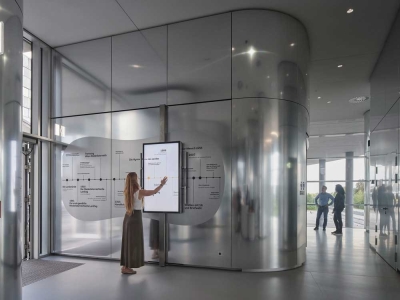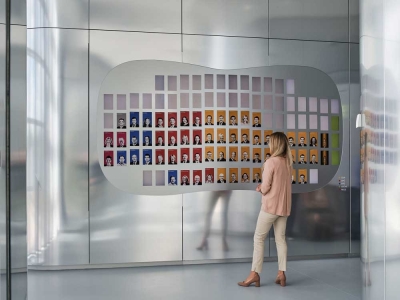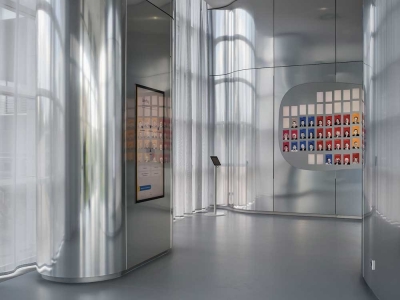2021 to 2022
Text: Alexandra Hörtler; Fotos: STUDIO MAKS, Günter Wett, NLK Pfeiffer
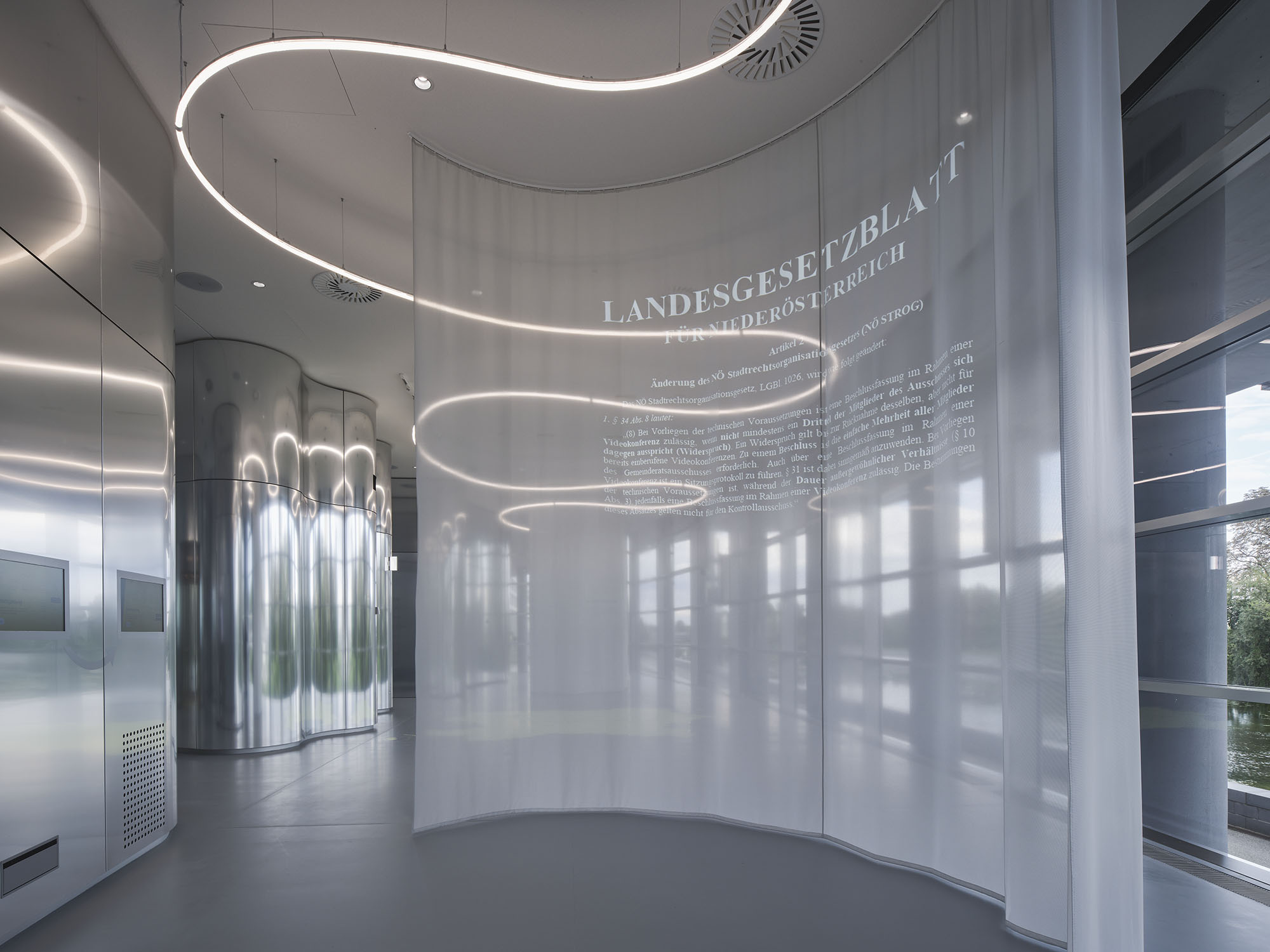
Together with the Rotterdam-based architecture studio STUDIO MAKS, we presented the winning project in an architecture competition, competing with six bidders from Vienna, Lower Austria, Italy and other places. The competition called for the general planning of the Forum Landtag, including the architecture, the redesign of the exhibition and the creation of a multifunctional space of movement and event venue. Members of the jury included the political analyst Dr Peter Filzmaier, the parliamentary expert Dr Werner Zögernitz, and Professor Ernst Hoffmann, architect of the Landhausviertel district, among others.
Connecting Dynamic Architecture With Its Surroundings
From an architectural point of view, the Forum Landtag is envisioned as a place where visitors can explore exciting and unexpected things. STUDIO MAKS created a dynamic space with flowing forms inspired by the nearby Traisen river and the movements of light. Inside, the walls are covered with gently mirrored material that create reflections of the visitors, who visually become part of the State’s democracy. In addition, the redesign of the entrance area will enhance the access to the building in St. Pölten’s government district. The new entrance contrasts with the existing buildings yet adds a new accent and makes visitors want to find out what’s inside. A new space of encounter is created that invites visitors to linger.
Presenting Political Work As An Interactive Exhibition For All
We were tasked with developing an exhibition that explores the State Parliament of Lower Austria in conjunction with its architecture, spanning the realms of democracy, politics and society. Communicating the exhibition themes in a vivid way and offering visitors opportunities to interact in many different ways are essential elements of our concept.
Visitors may choose their own way around the exhibition and find interesting perspectives. Our concept is based on two pillars: the target audiences and education. One challenge that we faced was finding the ideal way to address our target audiences and deciding how in-depth the topics should be covered. We decided to present the content of the exhibition across multiple levels, allowing visitors to get a quick overview or to explore individual areas in more detail. The eight interactive, partly playful, stations invite to delve deeper into the different thematic layers.
The new name “Forum Landtag“, staged as perceptual art, welcomes the visitors already as they enter the building’s forecourt, in the newly created space of movement. Here, the 573 coats of arms of all Lower Austrian municipalities combine to form an installation and symbolise the diversity but also the togetherness of the State of Lower Austria.
In addition to a touch screen that can be moved across a wall and has built-in sensor-based functionality to recognize its position and the content to be displayed, multi-projections and gesture recognition (Kinect technology) allow visitors to explore the work and tasks of the Parliament of Lower Austria. The media station “Niederösterreich Entdecken“(Discover Lower Austria) is the core of the new Forum Landtag. We embedded a stainless-steel map into the floor that displays numbers and figures about the local economy, population, and infrastructure as well as some interesting facts to give visitors insights into Lower Austria. Using depth camera technology and multi-projectors, visitors can walk onto the interactive floor projection without blocking the view of other visitors.

